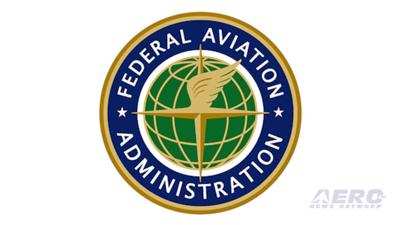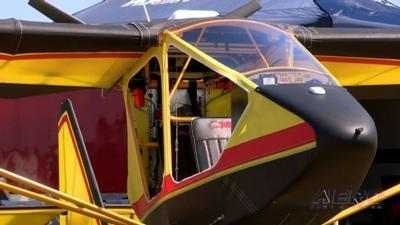Major Certification Initiative Imminent
The FAA has officially released a pre-publication version of a Notice of Proposed Rulemaking (NPRM) pertaining to the long-awaited MOSAIC aircraft certification scheme.

MOSAIC—an acronym denoting Modernization of Special Airworthiness Certificates—proposes to “enable enhancements in safety and performance and increase privileges under a number of sport-pilot and light-sport aircraft rules.” Ostensible enhancements under the inchoate rule include: increasing suitability for flight training, limited aerial work, and personal travel. The proposed rule seeks to expand the number and types of aircraft sport pilots may operate.
Moreover, the MOSAIC NPRM proposes to amend special purpose operations for restricted category aircraft; amend the duration, eligible purposes, and operating limitations for experimental aircraft; and add operating limitations applicable to experimental aircraft engaged in space support vehicle flights.
Speaking to the subject of MOSAIC and the regulatory framework presupposed by such, EAA CEO and chairman Jack Pelton stated: “MOSAIC had its genesis with a conversation between EAA and FAA officials nearly a decade ago, as we focused on safely creating more aviation opportunities for those who wanted to participate.”
Mr. Pelton continued: “Now that the NPRM is being released, we will study it closely and supply focused comments to ensure that the goals of this EAA-inspired initiative remain in the final language developed by the FAA. It will also undoubtedly be a topic of conversation as we gather for EAA AirVenture Oshkosh next week.”
EAA posits MOSAIC will benefit the Light Sport Aircraft sector insomuch as the legislation sets out to:
- Revise LSAs defining limitations, switching such from arbitrary weight to performance-based metrics, thereby increasing access to flight-training—by allowing for larger and more capable aircraft and permitting a wider range of students and instructors to fly such—and affording flight-schools broadened opportunities to supplement, refresh, or replace their fleets of training aircraft.
- Facilitate the adoption of new propulsion technologies—e.g., electric, hybrid, distributed power—by removing the restriction setting forth powered LSAs must be motivated exclusively by reciprocating engines.
- Leverage the existing Sport Pilot system of training and instructor endorsements in such a way that current and future sport pilots may expand the privileges of their certificates to include the operation of larger and more capable aircraft. Such a provision would apply to both sport pilots and higher-rated pilots operating under the privileges of a sport pilot certificate, and occasion a pathway by which extant pilots may remain active in general aviation.
Mr. Pelton added: “We appreciate the work of all those in the FAA who kept this process moving forward. EAA has led the effort on this initiative to expand freedoms while maintaining safety, and we will continue to push forward until it becomes reality.”
Public comments pertaining to the NPRM will be accepted for ninety-days following the official publication of such in the Federal Register.
The FAA, in a general sense, proposes to amend existing rules governing the certification and operation of light-sport category aircraft. MOSAIC is intended to modernize the agency’s regulatory approach to light-sport aircraft by codifying performance-based requirements reflective of advances in technology while doing away with the legacy, weight-based certification criteria. The legislation instantiates the FAA’s acknowledgment of the LSA sector’s evolution, and facilitates the segment’s growth, expansion, and increased complexity while preserving safety.

In 2004, the FAA published a final rule titled “Certification of Aircraft and Airmen for the Operation of Light-Sport Aircraft,” in which the agency established rules for the manufacture, certification, operation, and maintenance of Light-Sport Aircraft (LSA). The rule provided for the operation and manufacture of aircraft weighing less than 1,320 pounds—or 1,430 pounds for aircraft designed for water operations—to include: airplanes, gliders, balloons, powered parachutes, weight-shift-control aircraft, and gyroplanes. The FAA based the extent and rigor of certification requirements and operational limitations on a continuum predicated upon the public’s exposure to degrees of risk presumed consistent with the operation of the type and model of aircraft for which certification is sought; as the degree of perceived risk increases (as a function of aircraft capability and operating privileges) so the requirements, the rigor thereof, and procedures for certification
increase.
In establishing the 2004 LSA final rule, the FAA intentionally set the rigor of certification for Light-Sport Aircraft to fall between the criteria applicable to normal category airplanes and those designated “experimental.”
Since the ratification of the aforementioned rule, Light-Sport Aircraft have demonstrated a lower incidence of accidents than experimental amateur-built airplanes. The FAA looks upon the favorable safety record of Light-Sport Aircraft as validation of the veracity of its certification requirements, and considers such justification for the LSA expansions set forth in MOSAIC.
The FAA further proposes amendments pertaining to restricted category aircraft, including codification of special operating purposes for such. The MOSAIC NPRM includes, also, proposed changes to right of way and aircraft operations in the vicinity airports within Class G airspace.
 USCG MH-60 To The Rescue (Again) -- Rescues 4 Boaters
USCG MH-60 To The Rescue (Again) -- Rescues 4 Boaters Gray Eagle Order Placed for Army National Guard
Gray Eagle Order Placed for Army National Guard Aero-Biz Survival 101 (1120a): Expert Ideas To Help You Through Tough Times
Aero-Biz Survival 101 (1120a): Expert Ideas To Help You Through Tough Times Airborne 06.03.24: Rotax 915/916 SB, Starship 4 Ready?, B-17 Mementos
Airborne 06.03.24: Rotax 915/916 SB, Starship 4 Ready?, B-17 Mementos Mid-Continent Instruments and Avionics Mourns Former Leader
Mid-Continent Instruments and Avionics Mourns Former Leader




